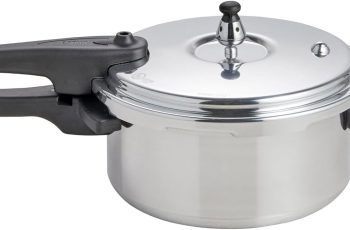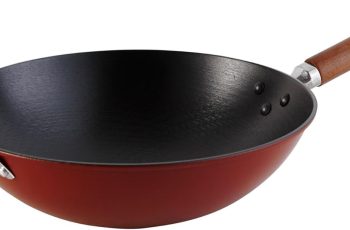Ad Blocker Detected
Our website is made possible by displaying online advertisements to our visitors. Please consider supporting us by disabling your ad blocker.
In the realm of outdoor cooking, Dutch ovens hold a special place due to their versatility and ability to create mouthwatering meals. However, using these traditional cooking vessels requires a certain level of caution and care to ensure both your safety and the success of your culinary endeavors. This article will guide you through the essential safety precautions and best practices when using Dutch ovens, equipping you with the knowledge necessary to enjoy the art of Dutch oven cooking with confidence and peace of mind. So, let us explore the key considerations that will enable you to make the most of this timeless cooking technique.
Choosing the Right Dutch Oven
When it comes to choosing the right Dutch oven for your cooking needs, there are a few key factors to consider. One of the first things to think about is the material of the Dutch oven. Dutch ovens are typically made from either cast iron or stainless steel. Each material has its own advantages and disadvantages, so it’s important to weigh these factors before making a decision.
Cast iron Dutch ovens are known for their excellent heat retention and distribution. They are perfect for slow-cooking dishes and browning meats. However, cast iron can be quite heavy, which may make it difficult to handle for some individuals. On the other hand, stainless steel Dutch ovens are lighter and easier to handle, making them a great option for those who want a more lightweight cookware option. Additionally, stainless steel is resistant to rust and corrosion, making it highly durable.
Another important aspect to consider when choosing a Dutch oven is the quality and durability of the pot. Look for a Dutch oven that is well-made and has a sturdy construction. It’s a good idea to read reviews and check the reputation of the brand before making a purchase. A high-quality Dutch oven will last for many years and provide reliable performance in the kitchen.
Preparing the Dutch Oven
Once you have chosen your Dutch oven, it’s important to properly prepare it before using it for cooking. The first step is to wash and season the pot. Wash the Dutch oven with hot, soapy water, using a sponge or dishcloth to remove any dirt or debris. Rinse thoroughly and dry it completely.
Seasoning is an essential step for maintaining and protecting the Dutch oven’s surface. To season the pot, rub a thin layer of vegetable oil or shortening over the entire interior surface. Place the Dutch oven in a preheated oven at around 350 degrees Fahrenheit for about one hour. This process will help create a non-stick surface and enhance the flavor of your dishes.
While preparing the Dutch oven, it’s also important to check for any defects. Inspect the pot for any cracks, chips, or other damages that may affect its performance. Additionally, take a close look at the lid and handles, ensuring that they are secure and in good condition. Address any defects or damages before using the Dutch oven to ensure safe and effective cooking.
Cooking Method Selection
Properly matching the cooking method to the recipe is crucial for achieving the best results with your Dutch oven. Different recipes call for different cooking methods, such as braising, stewing, or baking. Understanding the cooking method required for your recipe will help you determine the appropriate heat setting and cooking time.
It’s important to note that using high heat for extended periods can damage the Dutch oven and may even pose a safety risk. Excessive heat can cause warping or cracking, compromising the pot’s integrity. Therefore, it is recommended to avoid using high heat for prolonged periods. Instead, opt for low or medium heat and allow the Dutch oven to gradually heat up to maintain consistent cooking temperatures.
Placement and Stability
Choosing a stable cooking surface for your Dutch oven is essential for safe and efficient cooking. Make sure to select a surface that is sturdy and level, such as a stove burner or a heat-resistant countertop. Avoid placing the Dutch oven on surfaces that may wobble or tilt during cooking, as this could lead to accidents or spills.
In addition to selecting an appropriate cooking surface, ensure proper placement of the Dutch oven itself. Center the pot on the burner or heat source to distribute heat evenly. This will help prevent hot spots and ensure that your food cooks evenly. Failing to position the Dutch oven correctly may result in uneven cooking and could potentially lead to scorching or burning.
Handling and Lifting
When it comes to handling and lifting your Dutch oven, safety should be the top priority. Always use oven mitts or pot holders when handling hot surfaces. The handles and lid of the Dutch oven can become extremely hot during cooking, so it’s important to protect your hands and fingers from burns or injuries.
Avoid the temptation to place the Dutch oven directly on your lap or any other unstable or dangerous surfaces. This can lead to accidents or spills, causing serious injury. Instead, place the Dutch oven on a heat-resistant trivet or a sturdy cooking surface to ensure stability and minimize the risk of accidents.
Ventilation and Heat Management
Properly controlling the airflow is important when using a Dutch oven to cook. Most Dutch ovens come with a lid that can be adjusted to control the flow of air and heat. Adjusting the lid allows you to regulate the cooking temperature and prevent excessive heat buildup.
When cooking with a Dutch oven, caution should be exercised when adding or removing coals. Adding hot coals can cause a sudden surge in heat, potentially leading to scorching or burning of the food. Similarly, removing coals too quickly can result in a rapid decrease in cooking temperature. It’s important to handle coals with care and make adjustments gradually to maintain a consistent cooking environment.
Cleaning and Maintenance
After you have finished cooking with your Dutch oven, it’s crucial to allow the pot to cool down before cleaning. Placing a hot pot in water or exposing it to extreme temperature changes can cause damage to the Dutch oven and may even lead to cracking or warping. Allow the pot to cool naturally before beginning the cleaning process.
Once the Dutch oven has cooled down, clean it thoroughly to remove any food residue or buildup. Use a sponge or dishcloth with hot, soapy water to clean both the interior and exterior of the pot. Avoid using harsh cleaning agents or abrasive scrubbers, as these can damage the surface of the Dutch oven. Rinse thoroughly and dry the pot completely before storing.
Tips for Safer Cooking
To ensure safe cooking with your Dutch oven, it’s important to follow a few important tips. Never leave the oven unattended while it is in use. This will help prevent accidents and ensure that your food doesn’t burn or overcook. Additionally, keep children and pets away from the cooking area to minimize the risk of burns or injuries.
Avoiding Common Mistakes
There are a few common mistakes that should be avoided when using a Dutch oven. First, avoid using harsh cleaning agents that can damage the surface of the pot. Stick to mild dish soap and warm water for cleaning. Additionally, it’s important to remember that Dutch ovens are not designed for deep frying. Attempting to deep fry in a Dutch oven can result in hot oil splatters and potentially cause injuries.
Storage and Care
Proper storage and care are essential for maintaining the longevity of your Dutch oven. After cleaning and thoroughly drying the pot, store it in a cool and dry place. Avoid exposing the Dutch oven to moisture or extreme temperature changes, as this can lead to rust or other damage.
To prevent rust, it is crucial to keep your Dutch oven seasoned. Seasoning is the process of applying a layer of oil to the pot’s surface to create a protective barrier against moisture. Regularly seasoning your Dutch oven helps to maintain its non-stick properties and prevents rust from forming. Follow the manufacturer’s instructions on how to season your specific Dutch oven model.
In conclusion, choosing the right Dutch oven, properly preparing it, and following safe cooking practices are key elements to consider for a successful and enjoyable cooking experience. By understanding the material options, checking for quality and durability, and following proper cleaning and maintenance procedures, you can ensure that your Dutch oven remains a reliable and effective kitchen tool for years to come. Remember to prioritize safety at all times and enjoy the versatility and delicious results that a Dutch oven can provide.

